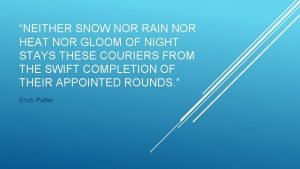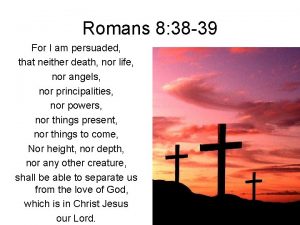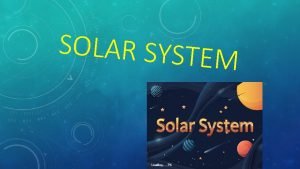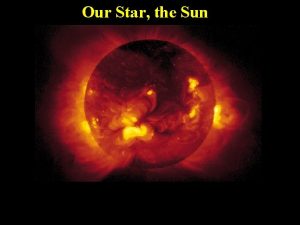Reflections Then star nor sun shall waken Nor



- Slides: 3

Reflections Then star nor sun shall waken, Nor any change of light: Nor sound of waters shaken, Nor any sound or sight: Nor wintry leaves nor vernal; Nor days nor things diurnal; Only the sleep eternal In an eternal night The Garden of Proseperine, Swinburne [Susanne Langer brings my attention to a fact; that the very denial of all these elemental things serves only to bring them forth -] In the late summer of 2001 i learned of the untimely death of Francisco Varela. I had already completed the set of works for Otto Scharmer that i had created on one single sheet of glass, in monochrome. I was unaware of his departure until that afternoon -when i'd created an i(n)mage i later called '"Running the Perfumed Garden". Later, in evening time i walked down the narrow path ; -) toward the glasshouse ; -) looking up to the sky i saw a 'shooting star'. The first and only time in my life. It hissed overhead, a delayed reaction. I have now chosen a picture to attend your introduction, its called "Arose". There are many reasons for the choice, some cultural and others anthropological. That they are among the oldest emblems found in all cultures around the world, adorning objects of value and pleasure. That because as a child i found in their perfume a deep magical and aesthetic power. In recent meditations and reflections and self educational meanderings i have started to engage other personalities, aspects and references to the rose. An article by Nicholas Humphrey, who i believe has a certain regard for the work of Varela prompted thoughts.

How many people would se(n)(s)e in the painting "Arose" -- the rose; the loops; the faces of the people; the hands of creator and Creator; the armless clock; the thickness of its moment; the singularity of its presence; the monet'ismic reference; the wriggles of acceptance; the smudges of rejection; . . i wonder if the hand has spoke in the silence of the moment all that. . . all this. . . and a bit more ; -). . . and how one narrow path blossoms into a timely circle? . . . Humphrey himself uses art (painting) selectively to flag up for us the notion he has of the importance of the 'momentary nature' of the 'aesthetic moment' of creativity. . . Humphrey explains. . "The analogy I like to use is from art history. Until the French impressionists came along, most paintings were concerned with how a situation is developing in time: where things have come from and where they're going. It took Monet to value the present moment for itself. To say, "This is Rouen cathedral as I am experiencing it now; this is what hits my face as I look at it. " The clock on Rouen cathedral in his paintings doesn't even have a hand on it. There's no time dimension here, no before and after, just a now. Monet grasped this moment, and celebrated it just for what it is, producing a thick painting, full of pigment, to represent a thick moment of his subjective experience, with no antecedents and no consequences. It's the same with the thick moment of sensation, the time we live in. Stand on a street corner in New York and look at the people passing by: the amazing thing is that they're living in the present. Conscious feeling, I suggested, is a remarkable kind of "intentional doing". Feelings enter consciousness not as events that happen to us but as activities that we ourselves engender and participate in. " (Humphrey) then closes in on the rose ; -). . . "When a person smells a rose, for example, he responds to what's happening at his nostrils with a "virtual action pattern": one of a set of action patterns that originated far back in evolutionary history as evaluative responses to various kinds of stimulation at the body surface — wriggles of acceptance or rejection. In modern human beings these responses are still directed to the site of stimulation, and still retain vestiges of their original function and hedonic tone; but today, instead of carrying through into overt behaviour, they've become closed off within internal circuits in the brain; in fact the efferent signals now project only as far as sensory cortex, where they interact with the incoming signals from the sense organs to create, momentarily, a self entangling, recursive, loop. My theory was that the person's sensation, the way he represents what's happening to him and how he feels about it, comes through monitoring his own signals for the action pattern — as extended, by this recursion, into the "thick moment" of the conscious present. Now, I still think this is a pretty good idea. Especially because of its potential to explain the underlying functional architecture — even the neurophysiology — of phenomenal experience: the "what it's like" to live in the subjective present of sensations. The sensory loops I identified could create an "as-if" time dimension, so that every moment of consciousness lasts — paradoxically — longer than it actually lasts in physical time. " ''Paradoxically''. . . ''lasts - longer than it actually lasts''. . . A kind of implicated ; -) possibility space. (Bohm). A new sp(l)ace for something infinitely larger than the rose; the rose bush; my sensory engagements; my memorial engagements; my garden; my landscape; my whole world. . . ? The movements open new sp(l)aces. Like any rose, having opened we need to close. A poem from an old 'late' teacher and poet Peter Redgrove, - for no other reason that it is here like a friend now beside me.

The Turning Stars Orion hammering up there like brass studs Nailed into the black wood of the vault, Great mask above the trees of African fogwood Declaring with its brass fixings That God floats above us Riveted to his vault; We sneak cowering past the tree trunks For the star of honey and wine is a rivet And the stud of influence that causes flu', We should not let its light glide into an open pupil, Any of these stars could switch our luck, Twitch life out of our hands. How deep the well of the eye is in the daytime, You can see your stars in it, There is an erotic and ghostly atmosphere Which tells me my star is changing; Which side is showing now? The trees Become like dark stars with outstretched beams; Look! The very trees have lost their substance; They are thin stockings of sheer silk Smoothed over their lasts of timber: That is all a tree is, yet how much! Cellulose, and rusting leaves, and living silk. The dusk is falling, like gentle silk With its breezes: Orion rises, The ghostly air is erotic again with wet Like star drifts through the trees, Earth's swivelling beaded mists Made entirely of lenses Nailing watchful studs to the hairy leaf, A R o se : : H a m m e r e d : : S k y Hammering out the constellation Web. From original ‘Arose’, October 2004 Acrylics on A 3 paper : : electrified & fielded Peter Redgrove (Andrew Campbell, North Moreton, Oxon. October 2004)





